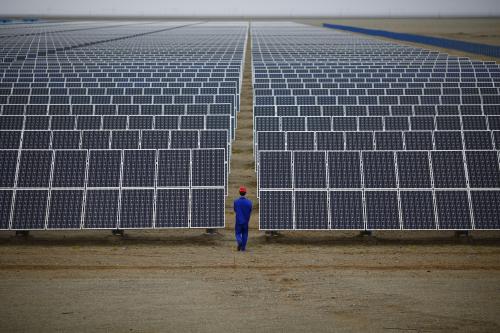G-20 leaders are due to discuss options to revive the moribund World Trade Organization (WTO) at this weekend’s Osaka Summit. Since the last WTO Ministerial Conference in December 2017, trade officials have struggled to take forward several unrelated, incremental initiatives. There is no apparent organizing logic, nor any systemic perspective. Worse, the China-U.S. trade war has absorbed bandwidth that could have been usefully deployed elsewhere.
The latest Global Trade Alert (GTA) report, which we wrote, identifies WTO reform options that directly address the first-order problems that have built up over the past decade. We address each in turn.
WTO woes predate the trade war
The GTA team found:
- Since G-20 leaders last met in Argentina, their governments imposed trade distortions affecting over $1 trillion of commerce—$250 billion more than the comparable period last year and double the amount of trade harmed in the three preceding years. Moreover, this finding relates to G-20 measures taken between December 1, 2018 and April 15, 2019, before the China-U.S. trade war intensified in May 2019.
- A total of 288 G-20 trade distortions accounted for the more than $1 trillion in affected trade. China and the U.S. are responsible for one-sixth of that total. Subsidies to farmers and local manufacturers accounted for 118 of those trade distortions. China-U.S. tariff hikes matter but are only part of the story.
- While multibillion-dollar tariff hikes garner headlines, in fact since November 2008 a total of 348 trade distortions, each affecting over $10 billion of trade, were taken by 36 states. Fourteen governments imposed five or more instances of such jumbo protectionism. The Trump administration is responsible for just six of these 348 jumbo protectionist measures. The rot started well before the China-U.S. trade war.
- Subsidies to import-competing manufacturers and to farmers, and state-provided export incentives distort global trade the most. Over the past decade more than 90 percent of the trade distortions affecting over $100 billion of trade involved subsidies of different forms. Reversing tariff hikes should not be the only priority.
- By 2013, 70 percent of world goods exports competed against trade distortions imposed since the global financial crisis began. That percentage has risen in the six years since.
The WTO has a future: jaw, jaw not war, war
Following the failure of the Doha Round, there is no appetite for a WTO work program that requires every nation to liberalize. So, for better or for worse, a new agenda for the WTO cannot be based on the far-reaching opening of markets. Surprising as this may seem, that still leaves plenty of reform options on the table. Nothing stops coalitions of WTO members forging ahead so long as they do not harm others. In return, governments that stand aside should not veto progress.
Rather than putting liberalization at the core of any WTO initiative, the focus should be on rolling back the crisis-era discrimination that remains. Given the scale of such discrimination described above, restoring the world trade system to its pre-crisis state would deliver real benefits.
Using detailed data on crisis-era discrimination, a systematic examination of WTO reform options revealed:
- Special-purpose machinery is the only sector that can support a stand-alone agreement where the winners account for a critical mass of WTO members, taken to be responsible for over 80 percent of global trade in that sector. This accord would reform $142 billion of trade.
- Much more trade could be reformed by the smart bundling of sectors into a reform package.
- A deal removing crisis-era discrimination in the large general-purpose machinery and transport equipment sectors creates 38 winners among the WTO membership that together account for 86 percent of these sectors’ trade. The winners include China, the EU, India, the U.S., South Africa, and Turkey.
- A three-sector deal that rolled back crisis-era discrimination in the base metals, man-made fibers, and transport equipment sectors creates 76 winners among the WTO membership and reforms $1.5 trillion of trade. Winners are well represented on each continent and among every level of development.
- There are 67 multiple-sector deals where China, the EU, Japan, and the U.S. are winners. Some of these WTO reform options reform over $2.5 trillion of trade with little free-riding by nonmembers.
The G-20’s longstanding goal of promoting economic growth would receive a further boost if leaders in Osaka kickstart an inclusive WTO work program that restores the world trading system to its pre-crisis state. Doing so would follow Winston Churchill’s famous dictum: To jaw, jaw is always better than to war, war.







Commentary
Trade at the G-20 Osaka Summit: Jaw, jaw beats war, war
June 26, 2019